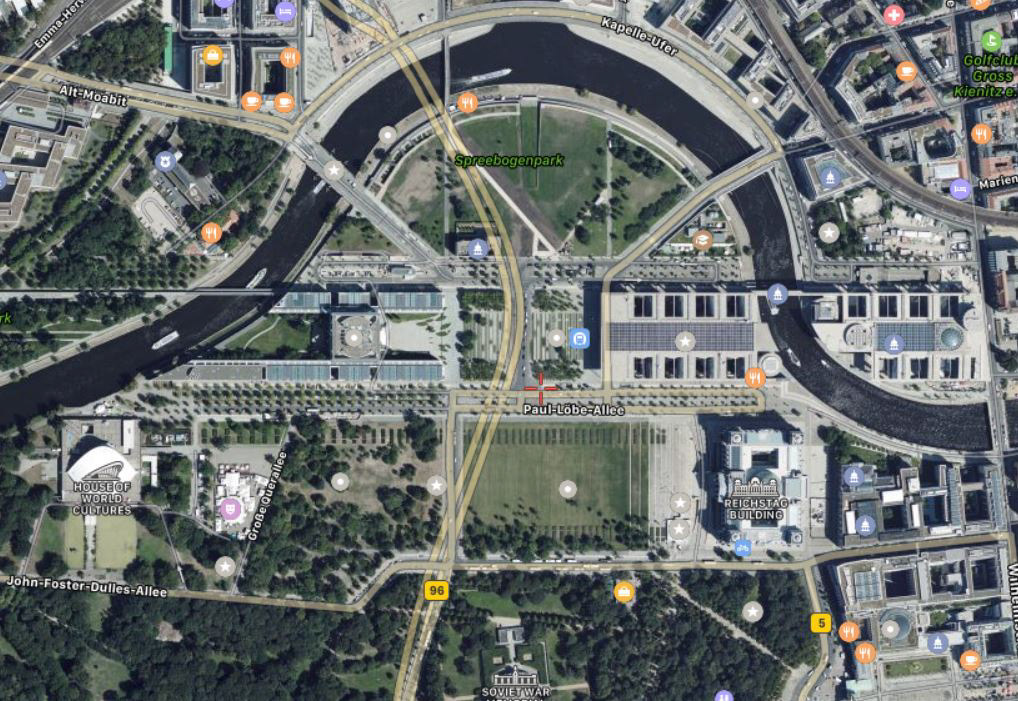Project 1:
Project Name: The Reichstag
Architects / Practice: Foster and Partners
Location: Berlin, Germany
Client: Federal Republic of Germany (Bundersrepulik Duetschland)
First opened: 27th of February 1884
The Reichstag is was built well after the unification of Germany in 1871 and was purposed to be a national assembly chamber for the Imperial Diet, which is the council of princes of the united city states of the imperial German state.
(3)
The Reichstag acted as the German parliament, which was a remarkably progressive and modern relative to its contemporaries at the time, despite the fact the only German men had the right to vote, as long as they were over the age of twenty five. The Reichstag acted as the home of the German parliament from the time of its opening in 1884 and hosted the German Diet until 1933. However, no meetings were held after 1933 due to an arsonist attack on the building on the twenty seventh of February, a mere four weeks after Adolf Hitler was appointed as chancellor of Germany. The attack was attributed to Marinus Van der Lubbe, a member of the German Communist Party as well as other prominent members of the party however subsequent investigations concluded that Van der Lubbe was the sole perpetrator (4). This attack was considered a massive catalyst in the National Socialists Workers Party’s (Nazi) path to gaining authoritarian grip on Germany’s political landscape, as they went from having a plurality to a majority in the parliament, and claimed that the burning of the Reichstag was a communist conspiracy to take over the German government (1).
However, renovations were not picked up until after reunification in 1991 after Norman Foster was able to win an international design competition to oversee the new Reichstag. The new design aimed to restore the Old Berlin Reichstag from its dilapidated form while still keeping a few essential elements in the new design. The most important element that solidifies this building as a contemporary design that proves that it can keep up with the modern standards of efficiency, is Norman Foster’s focus on a meticulous environmentally sustainable design.
The design team established an agenda of energy efficient features in collaboration with the federal government officials and appointed advisors with the goal of obtaining a more sustainable architecture through reducing carbon dioxide and fossil fuel emissions.
The architects sought to take advantage of natural daylight and a natural ventilation system, which is the focus of this paper, but it should be noted that these features are designed to be compatible with a number of other solutions to energy efficiency that were applied. The building is able to achieve a ninety four percent decrease in carbon dioxide emissions by using biomass as a renewable energy source.
The main habitable working space of the building, the plenary chamber, was the center of attention for the designers, where they sought to minimize energy consumption and carbon emissions by maximizing the amount of natural daylight that could be provided for the entire building. The key was the dome, which is the part of the building most observed feature by the public, is the centerpiece for Foster’s daylighting design plan for the Reichstag and is located above the main parliamentary chamber. The observation deck that allows visitors to access a terrace roof, with a ramp leading up to the observation platform inside the dome to enable a token standing above the parliamentary chamber (6).
This dome is the cornerstone of the efficient daylighting and ventilation design of the building, as it utilizes natural light as both a functional and aesthetic feature of the structure. Starting with the light sculptor at its heart, which is a light shield that tracks the path of the sun, allowing it to obstruct solar gains and solar glare, and its role is inversed after sun set, and the sculptor acts a light beacon, projecting a beam of light on the Berlin skyline. The sculptor itself is made up of 360 mirrors set up at an angle, acting like a large Fresnel lens, enabling it to work like a lighthouse which establishing the Reichstag’s symbolic position in Germany’s federal capital (7). The reflectors also provide horizontal lighting into the parliamentary chamber.
The Reichstag is a model example of modernizing the energy usage of public government buildings, rather than just private individual’s projects, showing that embracing clever, environmentally friendly designs that take into consideration the fossil fuel consumption and the building’s carbon footprint, is not just limited to private individuals’ endeavors but also for universally accessible and made to benefit the average individual. Norman Foster achieved the goal of designing a energy efficient building, taking advantage of renewable energy sources and natural light wherever possible to provide maximum comfort for inhabitants, creating a design that satisfies both the engineering and artistic needs that the German Federal republic needed to not showcase the Reichstag as an essential piece of the capital, but also project the image of a thoughtful and progressive government.




3. Satellite.pro. Satellite. [Online] https://satellites.pro/Germany_map#52.519804,13.372722,16.
4. Tobias, Fritz. The Reichstag Fire. Germany : Harper and Row Inc., 1964.
5. K. J. Mason, Philip Fielden. Republic to Reich: A History of Germany (1918-1939). s.l. : McGraw Hill, 2007.
6. Foster and Partners. Foster + Partners . Foster and Partners. [Online] 2020. https://www.fosterandpartners.com/projects/reichstag-new-german-parliament/.
7. Philips, Derek. Daylighting: Natural Light in Architecture. Oxford : Architectural Press, 2004.
